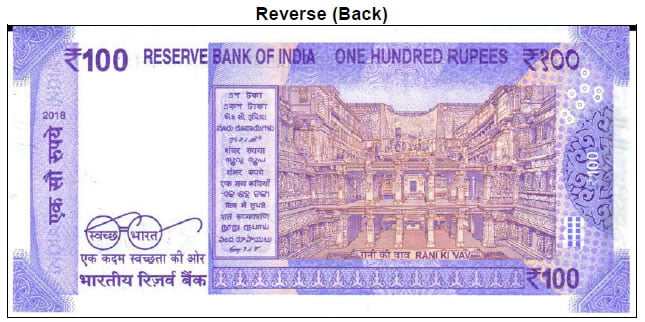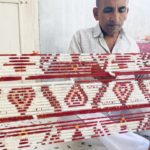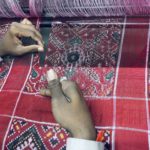The largest city in India in the year 1000 A.D.
Who is Queen Udaymati? We know this about her. She built the Rani ki Vav, one of the most beautiful stepwells in Gujarat. This was not uncommon in the 11th century during the Chalukya empire when step wells, often in memory of dead kings were commissioned by queens. There is one in Boondi, Rajasthan. Gujarat has about 120 step wells. Rani ki Vav is in memory of King Bhimadev: a Chalukya king.
What is the connection between weaving and all this history? Well, a descendent of Bhimadev, the king in whose honour the step well was built was Kumarapala, a Solanki king. It was Kumarapala who is credited with having brought 700 weavers from Jalna in Maharashtra to Patan.
Rani ki Vav is special because it is a source of inspiration. Many of the motifs for the Patan Patola saree come from the designs along the side of the step well. The sculptures too are not just sensuous but also offer hints of healing practices of the time. A Bangalore-based scholar, Rekha Rao posits here that the sculptures of Rani ki Vav are examples of “mudra vignana” or healing hand gestures.
Patan today is a clean quiet town. Its citizens still talk about the glory days when it was called Anhilwara. It is on this ancient city that today’s Patan is built. In 1000 AD, Patan/Anhilwara was the largest city in India and the 10th largest city in the world with a population of 100,000.
Some remnants of its greatness remain in an unusual place. The back of a Rs. 100 note has a photo of the Rani ki Vav stepwell.

Step wells have been called inverted temples. Whether they were places of worship or simply a place where the queen and her attendants could spend time in cool repose during the scorching summers, we can never know.
What we do know is that the motifs that were sculpted in Rani ki Vav made their way into the weaves of Patan.





